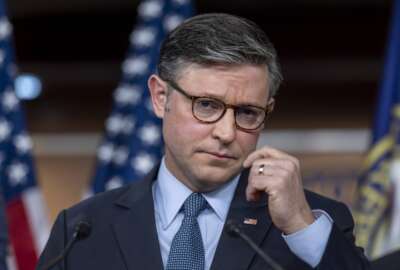After 9/11, management lessons learned
John Palguta, vice president for policy at the Partnership for Public Service, joined the Federal Drive to discuss how the 9/11 attacks 10 years ago affected.
wfedstaff | June 4, 2015 10:20 am
By Jack Moore
Federal News Radio
The response to 9/11 from the government and the public will have long-lasting impacts.
Now, the Partnership for Public Service is now looking back on that historical moment etched in the collective memory for a look at how management has evolved.
John Palguta, the vice president for policy at the Partnership for Public service, discussed some of the lessons learned from that fateful on the Federal Drive as part of Federal News Radio’s ongoing coverage of “9/11: A Government Changed.”
Palguta said some of the best practices were especially timely after the magnitude 5.8 earthquake that rocked the D.C. region: communication, preparation and making sure employees know who’s in charge.
“Yesterday was a good example of when something major occurs, like an earthquake, people look to government … to do its job and the same thing (happened) 10 years ago on 9/11,” he said.
Palguta said the partnership is preparing a report on the management lessons of 9/11 that it will release next week. It has been working with federal employees and managers, who experienced 9/11, to “use the past to inform the future,” he said
“The larger management lessons learned, though, have to do with the response after,” Palguta said.
For example, following the attacks the White House and Congress came together to create The Department of Homeland Security, an amalgamation of 22 other agencies, as well as the Office of the Director of National Intelligence to coordinate the intelligence-gathering process of 16 disparate agencies
Palguta described it as a “structural response to some of the failures of communications,” by increasing information sharing, bolstering communication and creating more oversight in the case of the DNI position.
But just under 10 years later the consensus is that while setting up DHS and ODNI were noble pursuits, “they certainly did not unfold as smoothly as people thought,” he added.
For example, Palguta said one of the key lessons learned deals with an agency’s chain of command and its culture.
Creating an organizational chart is “almost the easy thing to do,” he said. The difficult part is making sure people are engaged in the chain of command because of the often informal way that people communicate and work.
Copyright © 2025 Federal News Network. All rights reserved. This website is not intended for users located within the European Economic Area.





